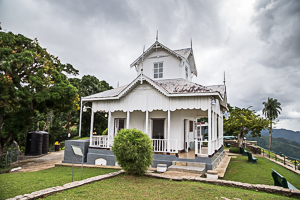Downtown Port of Spain
Port of Spain offers much for the cruiser. From exploring the many culturel offerings, to shopping or enjoying the many food offerings to exploring the zoo or botanical gardens. Downtown is easly reached by "Maxi" taxi either directly to the Port of Spain terminal or changing at the walk over just beyond the West Shore Medical Center to a Maxi going uptown.

Zoo and Botanical Gardens
Emperor Valley Zoo
The Emperor Valley Zoo is situated adjacent to the Botanical Gardens, Port of Spain, Trinidad. The exhibits are spread over a 7.2 acreage, with much of the flora of the original site retained, thus enhancing the overall landscape. Enclosures, pathways, fences and buildings have been incorporated into the natural topography creating a wilderness atmosphere and a feeling of relaxation for the many visitors who come each year.
Royal Botanic Gardens of Trinidad and Tobago
The Gardens are comprised of twenty-five (25) hectares of beautifully landscaped grounds located north of the capital city of Port of Spain. The gardens consist of approximately seven hundred (700) trees of which thirteen percent (13%) are indigenous to Trinidad and Tobago. Trees in our gardens represent every continent of the world.
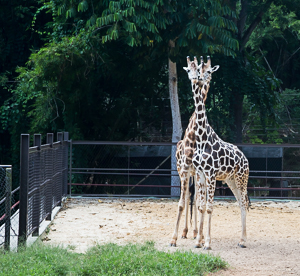

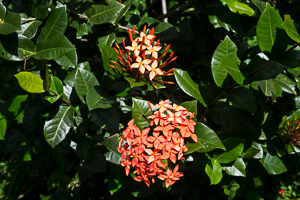
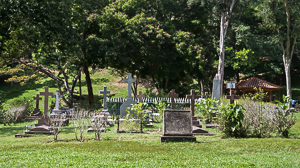
Queen’s Park Savannah
Queen's Park Savannah is a park in Port of Spain, Trinidad and Tobago. Known locally as simply "the Savannah," it is Port of Spain's largest open space. It occupies about 260 acres (110 ha) of level land, and the distance around the perimeter is about 2.2 mi (3.5 km).
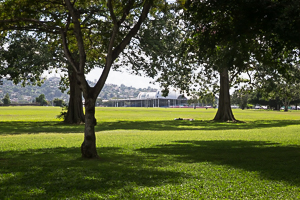
The Magnificent Seven Houses
The Magnificent Seven Houses are mansions located alongside Queen's Park Savannah in northern Port of Spain, Trinidad and Tobago on Maraval Road in the St Clair neighborhood. They were built between 1902 and 1910 on land that was previously used as a government stock farm and are listed as heritage sites at the National Trust of Trinidad and Tobago. Stollmeyer's Castle was the first building in the neighborhood and took several years to complete, as was typical with the Magnificent Seven Houses.
The structures were designed in an array of architectural styles including French Colonial, Scottish baronial, Indian Empire, and Moorish Mediterranean styles—often blended with Caribbean architecture. Many have unusual elements, like the chiming clock and lighted clock tower of Queen's Royal College. Stollmeyer's Castle is said to be modeled after a wing of Balmoral Castle. Hayes Court, a French Colonial style building, has contemporary Scottish cast iron elements and traditional Demerara windows. White Hall[a] is made of natural white limestone of Barbados. Some of the structures were made of imported materials, like Italian marble and Scottish cast iron elements.
Most were originally built as residences and kept within families for decades. Archbishop's House was built as, and remains, the official residence of the Archbishop of Port of Spain. The Anglican Bishop to Trinidad resided in Hayes Court. Queen's Royal College was built as a secondary school for boys.
White Hall was used as the Office of the Prime Minister from 1963 to 2009. White Hall and Stollmeyer's Castle fall under the purview of the Office of the Prime Minister. The two buildings had restoration work so that they could be used by foreign dignitaries visiting Port of Spain. Both buildings were commandeered by the United States Armed Forces during World War II. Most of the Magnificent Seven Houses retain the aesthetics of the original designs. Of the buildings, Milles Fleur is the one most in disrepair due to extended periods where it was not occupied or maintained.
Wikipedia
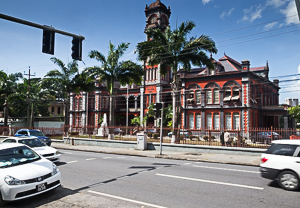
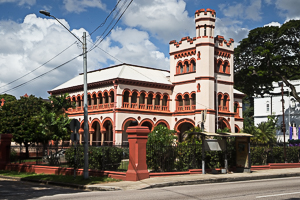
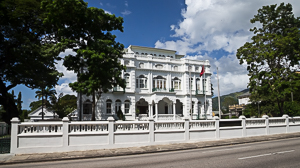
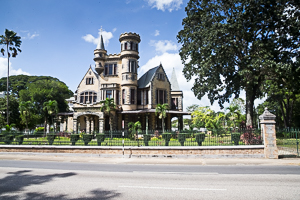
Fort George
Formerly called La Vigie, Fort George was part of a complex of fortifications, the building of which began in 1804 under the direction of the then British Governor, Brigadier-General Sir Thomas Hislop. The fortifications consisted of sea defences and a series of supporting batteries: the York, Princess Charlotte, Abercromby and Cambridge on the lower slopes and the Cumberland to the north above the Fort. Considered impregnable, it was the major defensive position in the island, but never to experience military action. In times of rumours of the war, merchants of Port of Spain would store their records and valuables at the fort. Fort George ceased to be a military establishment in 1846. A signal station was established there and continued operation until November 1964.
The National Trust of Trinidad and Tobago
